

|
|
|


|
|
1/8 Scale Nitro Formula One Car:
Kyosho Ferrari 643 - GP-10 - 3272G
|
Released by Kyosho in 1991, the Ferrari 643 GP-10 Formula 1 Racing Car - # 3272G - was based on the car driven by Alain Prost, Jean Alesi and for the last race of the season Gianni Morbidelli, in the 1991 F1 Championship, finishing 3rd in the Constructors' Championship with 55.5 points.
The unassembled kit came with an unpainted lexan polycarbonate Bodyshell, an OS Max-10FP-BX .10 Engine, and molded plastic Wheels with foam Tires. A Radio System, Fuel and Glow-Plug Batteries to be purchased separately.
Now considered rare, all the early 1990s Kyosho F1 RC models are much sought after by ardent collectors the world over.
Check out our Kyosho Archive for other F1 models.
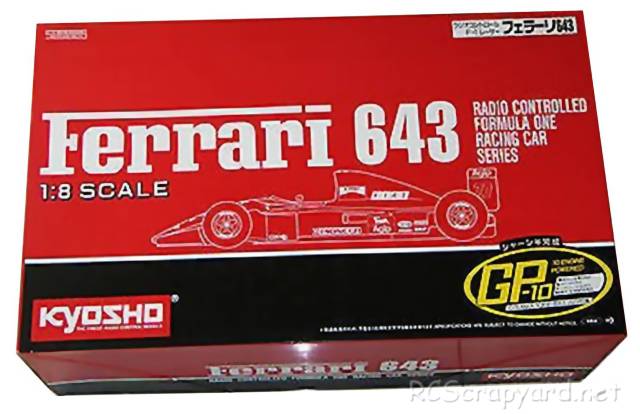
The 2WD model is based on a two piece FRP/alloy plate chassis, front and rear double wishbone suspension with inboard coil spring over oil filled dampers (front - laydown, rear - upright), a gear type differential, anti-roll bars, dogbone drive-shafts and sintered bronze bushings, that after a short while, when dust and grit get into them, can abrade the metal shafts that spins in them. If you are building this kit to race seriously these should be replaced by steel ball bearings ASAP.








|
|
|

★ Kyosho Ferrari 643 GP-10 - 3272G ★
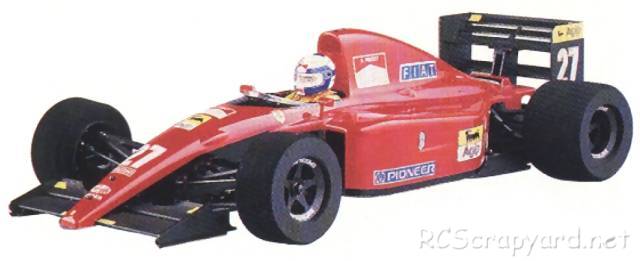
★ Kyosho Ferrari 643 GP-10 - Chassis ★
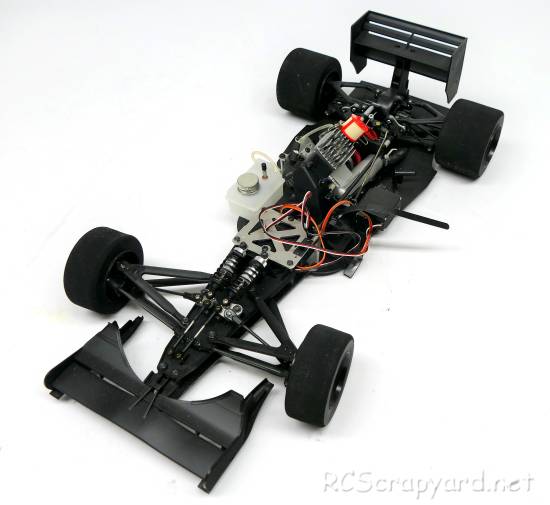
★ Kyosho Ferrari 643 GP-10 - Chassis ★
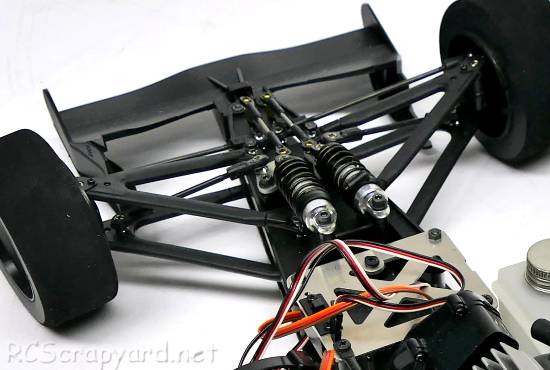
★ Kyosho Ferrari 643 GP-10 - Chassis ★
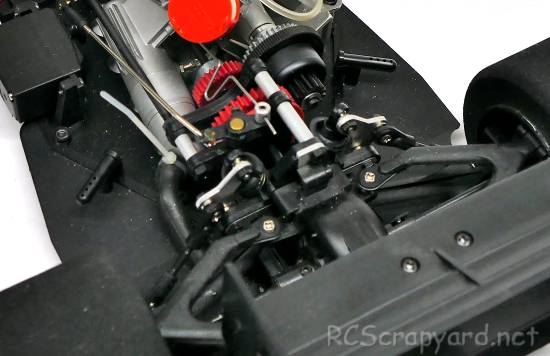
★ Kyosho Ferrari 643 GP-10 - Chassis ★
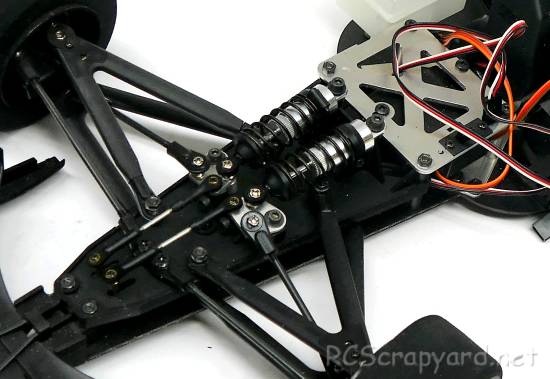
★ Kyosho Ferrari 643 GP-10 - Chassis ★
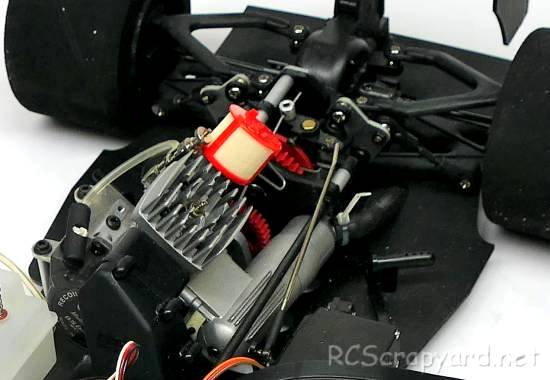
★ Kyosho Ferrari 643 GP-10 - Chassis ★
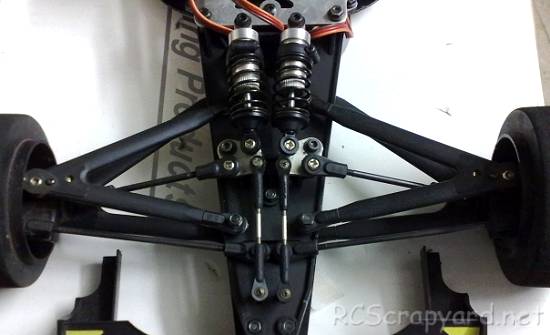
★ Kyosho Ferrari 643 GP-10 - Chassis ★
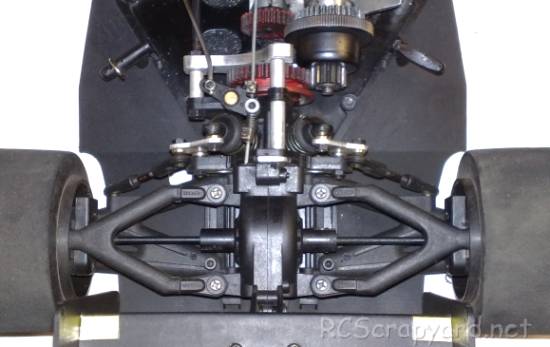
★ Kyosho Ferrari 643 GP-10 - Chassis ★
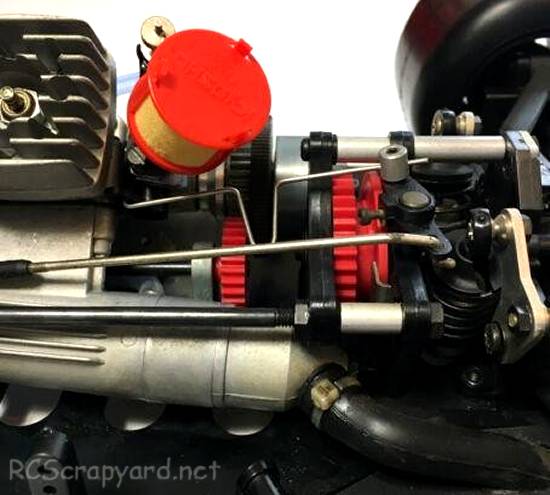
★ Kyosho Ferrari 643 GP-10 - Chassis ★
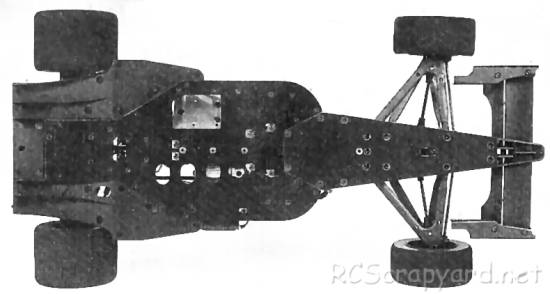
|
Buying a Used Radio Controlled Model
|
|
Manufacturers and Brands Catalogued, Listed and Reviewed by RC-Scrapyard.
At present, the RC Model Manufacturers, Brands and Distributors covered by us are: ABC Hobby, Academy, Acme Racing, Agama Racing, Amewi, Ansmann Racing, ARRMA, Team Associated, Atomic RC, Axial, AYK, Bolink, BSD Racing, Capricorn, Carisma, Carson, Caster Racing, Cen, Corally, Custom Works, Durango, Duratrax, ECX - Electrix, Exceed RC, FG Modellsport, FS-Racing, FTX, Fujimi, Gmade, GS-Racing, Harm, HBX, Helion, Heng Long, Himoto Racing, Hirobo, Hitari, Hobao, Hong-Nor, Hot Bodies, HPI, HSP, Intech, Integy, Jamara, JQ Products, Kawada, Kyosho, Losi, LRP, Maisto, Mardave, Marui, Maverick, MCD Racing, Megatech, Mugen, New Bright, Nichimo, Nikko, Nkok, Ofna, Pro-Pulse, Protech, PTI, RC4WD, Redcat Racing, RJ-Speed, Robitronic, Schumacher, Seben, Serpent, Smartech, Sportwerks, Step-Up, Tamiya, Team-C Racing, Team Magic, Thunder Tiger, Tomy, Top Racing, Traxxas, Trinity, Tyco, Vaterra RC, Venom, VRX Racing, WLToys, X-Factory, Xmods, Xpress, Xray, XTM, Yankee RC, Yokomo, ZD Racing and Zipzaps. |
|
Hints, Tips and Information
Maintain your Fuel System
Nitro engines need a regulated constant supply of fuel to run efficiently. If this supply is restricted or contaminated in any way, the engine will show problems in a number of ways. |
|
Hints, Tips and Information
Keeping Notes
If all you will ever do is go racing at your local track every week, then this article is not for you. However, if you ever look towards travelling around to different tracks around the country, or even the world, the value of keeping notes is all too obvious.
|
|
RC Models:
|
Radio & Motors: |
Other
Accessories: |